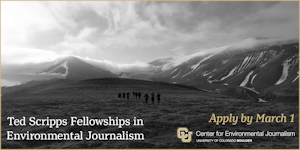"In the climate crisis, it’s possible to live in the same place but inhabit different worlds."
"The first thing to know about Thermal, California, is: It’s really damn hot. Already, at this early date in our planetary crisis, 139 days a year are over 95 degrees Fahrenheit in Thermal. Over the next 30 years, temperatures will rise 4 to 5 degrees more, and by the end of the century, more than half the year there will be hotter than 95 and nearly a quarter will be hotter than 112.
The second thing to know about Thermal, California, is: It’s a cartoonishly horrible expression of a moral and practical issue that exists, at some level, in every society on earth. The climate crisis is an inequality magnifier. The heat and the hurricanes, the flooding and the wildfire smoke, slam down with full force on the disadvantaged. Meanwhile, the more privileged remain comparatively safe, protected by money and power. That difference in suffering is known as the climate gap, defined by researchers in a foundational paper on the subject as “the disproportionate and unequal impact the climate crisis has on people of color and the poor.”
All over California — all over the United States — such gaps are increasingly evident. People of color, the poor and the undocumented live in hotter places. Latino workers labor outside more and are more likely to lack potable water. There are often substantial temperature differences between more and less affluent parts of the same cities. A study of 20 urban areas in the American southwest revealed a 4-degree Fahrenheit gap between the poorest 10% of neighborhoods and the wealthiest 10% of neighborhoods in the same towns. The same pattern held when comparing white neighborhoods and Latino neighborhoods. Among the states studied, the so-called thermal inequalities in California were the worst. And within California, Palm Springs, just 30 minutes from Thermal, and Inland Empire, the next-closest urban area, showed the worst differences of all: 6 to 7 degrees."
Elizabeth Weil and Mauricio Rodríguez Pons report for ProPublica August 17, 2021.
SEE ALSO:
"Unchecked Climate Change Will Be Hell On Outdoor Workers" (HuffPost)
"Too Hot To Work: The Dire Impact Of Extreme Heat On Outdoor US Jobs" (Guardian)













 Advertisement
Advertisement 




